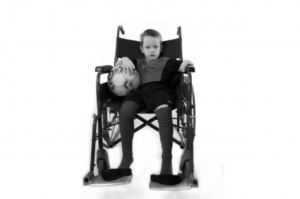
Rett syndrome is a rare genetic development and neurological disorder that affects girls. It has an impact on the child's ability to develop normal brain function. As such, the child experiences progressive inability to use the hands, head, and legs. Affected children also have repetitive hand movements, such as wringing and putting hands into the mouth.
They are also prone to gastrointestinal disorders, and up to 80% have seizures. However, its occurrence is very low as only one in 8,500 female children develops the syndrome across all ethnicities and geographies. The development of the syndrome occurs in four main stages:
Stage 1: Early Symptoms
Signs and symptoms of this stage during this stage are fairly mild as they child grows normally for the first six months. This stage is sometimes referred to as stagnation as the kid's development is slow and may stop altogether. The most evident symptoms for this stage include:
- Delayed speech.
- Reduced interest in toys.
- Unusual limb and hand movements.
- Reduced muscle tone.
- Problems with mobility- walking, sitting, and crawling.
Most of the symptoms of this rare disease manifest from the child's sixth month to 18 months of life and can persist for a year or more. However, this stage may go unnoticed by the kid's parents and doctors because the change is gradual.
Stage 2: Rapid Destruction
The stage begins between ages 1-4 and may last for up to two years. Your child may lose some of his abilities or develop problems with speech, memory, language, mobility, coordination, among other brain functions. Most behavior and characteristics mimic those of the autism spectrum disorder. Signs of this stage include:
- Troubled sleep.
- Reduced growth of the head.
- Complete loss of the kid's ability to use his hands- he may exhibit difficulty in normal hand movements like clapping, washing, wringing, and tapping.
- Loss of interest in interacting with people.
- Crying for no apparent reason.
- Awkward walking.
- Difficulty chewing, swallowing, eating, and constipation that causes occasional stomach aches.
Later on, during this stage, the child may experience hyperventilation (rapid breathing) or reduced breathing, including breath-holding. The kid may also swallow air, causing abdominal bloating.
Stage 3: The Plateau
The stage manifests when the child turns two years, though it may also occur as late as ten years. It lasts for a prolonged period with most girls remaining stunted for most of their lives.
Some of the symptoms that happened in the previous stage may improve as the child begins to communicate and use hands. There is also reduced irritability and crying. He may also manifest improved alertness and attention span. Problems arising during this stage include:
- More frequent episodes of seizures.
- Bruxism (teeth grinding).
- Abnormal heart rhythm.
- Irregular breathing patterns with episodes of shallow breathing followed by fast, deep breathing.
- Difficulty in gaining and maintaining weight
Stage 4: Deterioration in Motor Movement
The stage lasts for years or decades with the main symptoms including:
- Inability to walk.
- Weakness of the muscles with abnormal stiffness in the legs.
- Development of a curved spine (scoliosis).
- Brain function, language skills, and communication remain stable with repetitive hand movements reducing and an improved eye gaze. Seizures also decrease during the kid's adolescence and early adult life.
Causes
Rett syndrome was first discovered in 1966 by an Austrian neurologist, Andreas Rett. Its causes remained unknown until Huda Zoghbi demonstrated the genetic mutations of the MECP2 in 1999, which was believed to bring about the abnormality.
The genetic mutation of the MECP2 located on the X chromosome causes the syndrome. The MECP2 gene carries instructions for producing the protein responsible for brain development. Its mutation prevents the nerve cells in the brain from working properly.
Since the mutation occurs on the X chromosome, the condition is exclusively diagnosed in girls. Boys who happen to have the genetic mutation that causes the syndrome may die before birth or early on during infancy. Only a small number of males experience a different mutation that results in the destructive nature of this syndrome.
Diagnosis
A diagnosis is performed based on the kid's symptoms by ruling out other common disorders. As such, a conclusive diagnosis may not be possible until the child's later years. A genetic blood test may be used to identify any genetic mutation of the MECP2 gene.
Treating the Syndrome
Treatment primarily focuses on managing the symptoms as there is no definite cure for the syndrome. Parents also need help and support from healthcare professionals when taking care of kids who are affected by the syndrome. Here are a few effective management remedies:
An example for hope
Clint Black, a country music singer and song writer, makes time to visit families and children who have the syndrome. This was after his niece, Courtney, suffered from the disease and died at the age of 16. Today, Black serves as a chairperson for the Research to Reality crusade for the International Rett Syndrome Foundation.
Conclusion
While self-care therapy helps kids learn how to perform most daily activities, they require lifelong assistance. As such, parents and caregivers play an active role in the child's development and management of the syndrome.
Image: Source
Comments
comments

